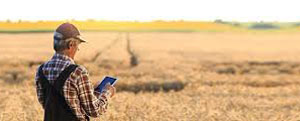
The
Need for Rural Broadband to Benefit Agricultural Organizations
By FBWorld Team
According
to a U.S department of agriculture report, a case is being made
that better access to digital broadband would benefit agricultural
organizations. This is so because the majority of agriculture
organizations are located in rural communities outside the highspeed
connectivity the city offers. Farming is an old craft where
the prevailing wisdom has been that hard labor, healthy seeds,
seasonal awareness and good equipment are the only sure way
to harvest. Until now this belief has never been challenged.
But issues like climate change, over population, and the thought
of labor shortages are causing people in the community to reexamine
their approach.
The
Report published by the American broadband Initiative, has stated
in no uncertain terms that adoption of digital agricultural
technologies would have an immediate benefit worth 18% or $64.5
billion annually, based on 2017 data. If agricultural communities
succeed in giving themselves Rural Broadband, they can count
on tools for improved planning such as microclimate modeling,
yield monitoring, and precision seeding.

According
to Megan Nelson an economic analyst for the American Farm Bureau
Federation, "The USDA is absolutely jazzed about this opportunity."
They have begun outlining key priorities for strategic action
planning involving improved broadband deployment, incentivizing
innovative technologies and creating environments for innovation.
Most importantly the USDA is reducing barriers in federal processes
to access government assets for anybody looking to extend broadband.
As
more pockets of the rural agricultural community tap broadband.
Data keeps coming in as to supply chains being shortened as
digital direct to consumer sales are starting to replace middle
man. USDA estimates a revenue increase of 50% per unit of apples,
649% per unit of salad mix and 183% per unit of blueberries
based on data collected from 2014 to 2017.

Live
stock and dairy sectors are poised to benefit the most. Utilizing
Bluetooth technology, animal wearables transmit general health
data directly to the producer resulting in a reduction in medication
per animal, as well as shortening of the cattle-finishing process
by four to six weeks.
It's hard to know how the USDA and other organizations have
come up with the estimation that 64.5 billion annually could
be saved by adapting broadband. But so far no one has surfaced
to dispute it. The USDA is leaving us with a call to action.
For the full benefits of High-speed broadband to be realized
throughout rural areas, adoption rates of precision agriculture
tools and next generation technology needs to be higher. If
that happens phone & cable companies will take a hint and
start extending their service areas.
This
is an issue that effects everyone who eats. So, let's take a
cue from the USDA and spread the word. If enough people are
talking about it our food supply can continue uninterrupted
even while the pressing issues of today begin to bare down on
us.

By Arthur Walsh
Other
Related Links:




















